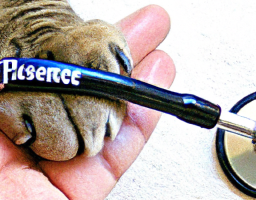Have you ever wondered if pet insurance will cover pre-existing conditions for your furry friend? It’s a common concern among pet owners, and understandably so. After all, nobody wants to be stuck with medical bills for a condition that their pet had before they purchased insurance. In this article, we’ll explore the topic of pet insurance and pre-existing conditions in detail, and answer all your burning questions. From how pet insurance companies define pre-existing conditions to the coverage options available, we’ve got you covered. So, keep reading to learn more and make an informed decision about protecting your pet’s health.
When it comes to pet insurance and pre-existing conditions, there are several factors you need to consider. Firstly, it’s important to understand how pet insurance companies define pre-existing conditions. Generally, a pre-existing condition refers to any illness or injury that your pet had before the insurance policy was purchased. However, different insurance providers may have varying definitions and guidelines for pre-existing conditions, so it’s crucial to read their terms and conditions carefully. Additionally, it’s worth noting that most pet insurance policies do not automatically cover pre-existing conditions. However, there are some exceptions and alternative options that may provide coverage for certain pre-existing conditions. In the upcoming sections, we’ll delve deeper into these details and help you navigate the world of pet insurance and pre-existing conditions.
What are pre-existing conditions in pets?
Definition of pre-existing conditions in pets
Pre-existing conditions in pets are health issues or medical conditions that exist before the start of a pet insurance policy. These conditions can range from chronic illnesses, such as diabetes or arthritis, to previous injuries, like a broken bone or a hip dysplasia diagnosis. Essentially, any health condition that occurred or was diagnosed before obtaining pet insurance would be considered pre-existing.
Examples of pre-existing conditions in pets
Some common examples of pre-existing conditions in pets include allergies, heart disease, cancer, epilepsy, and certain congenital conditions. If your pet had a condition before obtaining insurance, it is important to check with the insurance provider to determine whether it falls into the category of pre-existing and how it may affect coverage.
Why is coverage for pre-existing conditions important in pet insurance?
The impact of pre-existing conditions on pet health
Pre-existing conditions can significantly impact a pet’s health and well-being. These conditions often require ongoing treatment, specialized medications, or frequent visits to the veterinarian. Without proper coverage, pet owners may be forced to shoulder the financial burden of these treatments, which can be costly and overwhelming.
Financial implications of treating pre-existing conditions
Treating pre-existing conditions can be expensive, especially when it comes to chronic illnesses that require long-term management. From regular medications to diagnostic tests and specialist consultations, the costs can quickly add up. Having coverage for pre-existing conditions can alleviate the financial burden for pet owners, ensuring that their pets receive the necessary care without the fear of exorbitant bills.
How coverage for pre-existing conditions can benefit pet owners
When pet insurance covers pre-existing conditions, it gives pet owners peace of mind knowing that their pets are protected, regardless of existing health issues. This coverage can provide financial relief and the ability to focus on their pet’s well-being instead of worrying about the cost of treatment. Additionally, it encourages pet owners to seek timely and necessary care for their pets, ultimately promoting better overall health outcomes.
Types of pet insurance coverage for pre-existing conditions
Limited coverage for pre-existing conditions
Some pet insurance policies may offer limited coverage for pre-existing conditions. This means that while certain aspects of treatment may be covered, such as medications or surgeries, others may be excluded. It is essential to carefully review the terms and conditions of the policy to understand the extent of coverage provided for pre-existing conditions.
Full coverage for pre-existing conditions
Full coverage for pre-existing conditions is less common in pet insurance policies. However, some insurance providers offer comprehensive coverage, which includes treatment for pre-existing conditions. Again, it is crucial to check the policy details to determine the scope and limitations of coverage.
Waiting period before coverage for pre-existing conditions kicks in
Most pet insurance policies have a waiting period before coverage for pre-existing conditions takes effect. This waiting period is typically designed to prevent pet owners from purchasing insurance after their pet has been diagnosed with a pre-existing condition. During this waiting period, any illness or condition that arises would likely be considered pre-existing. The length of the waiting period can vary between insurance providers.
Exceptions to pre-existing condition coverage
In some cases, insurance providers may exclude coverage for certain pre-existing conditions, even if they offer coverage for other conditions. It is crucial to review the policy’s exclusions and exceptions to understand which conditions may not be covered and to ensure that the policy aligns with your pet’s specific needs.
How does pet insurance determine pre-existing conditions?
Medical history evaluation
Insurance providers typically evaluate a pet’s medical history to determine pre-existing conditions. This evaluation often involves requesting medical records from the pet owner’s veterinarian to review the pet’s previous diagnoses, treatments, and any ongoing health issues. This assessment helps insurance providers understand the pet’s health status before the policy takes effect.
Examination by a veterinarian
In addition to reviewing medical records, some insurance providers may require a physical examination by a veterinarian. This examination aims to identify any existing health conditions that may not be documented in the pet’s medical history. The veterinarian’s evaluation can provide a comprehensive overview of the pet’s overall health and any pre-existing conditions.
Required waiting period for new pets
For new pets, most pet insurance policies have a waiting period before coverage begins. During this waiting period, any illnesses or conditions that arise may be considered pre-existing. The length of the waiting period can vary between insurance providers, so it is important to understand and adhere to the waiting period specified in the policy.
Factors to consider when choosing pet insurance for pre-existing conditions
Affordability and premium rates
When selecting pet insurance, it is important to assess the affordability of the policy. Consider the premium rates and whether they fit within your budget. Additionally, take into account any potential increases in premium rates as your pet ages or if you make claims for pre-existing conditions.
Coverage limits and deductibles
Understanding the coverage limits and deductibles of a pet insurance policy is crucial. Coverage limits determine the maximum amount the insurance provider will pay for treatment, while deductibles require the pet owner to pay a certain amount before coverage kicks in. Assessing these factors helps determine if the policy’s coverage aligns with the potential costs of your pet’s pre-existing conditions.
Range of covered pre-existing conditions
Different pet insurance providers offer coverage for different pre-existing conditions. It is essential to review the policy’s list of covered conditions to ensure it includes the specific health issues your pet has. Some policies may only cover specific conditions, while others provide more comprehensive coverage.
Customer reviews and reputation of insurance providers
Researching the reputation of insurance providers and reading customer reviews can provide insight into their overall satisfaction and claims process. Keep an eye out for any feedback related to coverage for pre-existing conditions to gauge the experiences of other pet owners with similar situations.
Steps to take when filing a claim for pre-existing conditions
Gathering necessary medical records
Before filing a claim for pre-existing conditions, gather all necessary medical records from your veterinarian. These records should include diagnostic reports, treatment plans, medications, and any other relevant documentation. Having this information readily available can streamline the claims process and ensure accurate documentation.
Consulting with a veterinarian
It is advisable to consult with your veterinarian before filing a claim for pre-existing conditions. They can provide guidance on what information may be required by the insurance provider and offer insights or recommendations on the treatment plan. Consulting with them can also assist in understanding the potential costs of managing the pre-existing condition.
Completing claim forms accurately
When filing a claim for pre-existing conditions, it is crucial to complete all claim forms accurately and thoroughly. Provide detailed information about the pet’s condition, treatment history, and any associated expenses. Any inaccuracies or omissions may lead to delays or denials in the claims process.
Providing supporting documentation
Along with claim forms, it is necessary to provide supporting documentation to validate the claim. This may include medical records, invoices, receipts, and any other documentation that supports the expenses incurred for the pre-existing condition. Collecting and organizing this documentation in advance can help streamline the claims process.
Alternatives for pet owners with pets with pre-existing conditions
Non-insurance options for managing healthcare costs
For pet owners whose pets have pre-existing conditions, there are alternative options to manage healthcare costs. Some pet owners may choose to pay for treatments out of pocket if the costs are manageable. However, it is important to consider the long-term financial implications and the potential strain on your budget.
Pet assistance programs
Pet assistance programs, such as nonprofit organizations or crowdfunding platforms, can provide financial assistance for pets with pre-existing conditions. These programs often rely on donations and grants to support pet owners in need. Research local pet assistance programs to determine if they can provide financial relief for your pet’s healthcare expenses.
Creating a savings fund for pet healthcare expenses
Another option is to create a savings fund specifically designated for your pet’s healthcare expenses. By consistently setting aside funds, you can accumulate a reserve to cover any medical costs that may arise due to pre-existing conditions. However, this requires careful budgeting and discipline to ensure the funds are readily available when needed.
Tips for preventing future pre-existing conditions in pets
Proper nutrition and regular veterinary care
Maintaining proper nutrition and providing regular veterinary care are essential in preventing future pre-existing conditions. Ensure your pet receives a balanced diet appropriate for their age and breed, and schedule routine check-ups to monitor their overall health. Early detection and timely intervention can help prevent certain conditions from becoming pre-existing.
Routine exercise and weight management
Regular exercise and weight management play a significant role in preventing obesity-related conditions and joint problems. Engage in activities that match your pet’s energy level and provide mental stimulation. Additionally, monitor their weight and consult with your veterinarian about proper feeding portions to maintain a healthy weight.
Preventative measures against common pet health issues
Take proactive steps to protect your pet against common health issues. This may include vaccinations, regular parasite prevention, and dental care. By focusing on prevention, you can minimize the risk of developing chronic conditions that may become pre-existing.
Conclusion
The importance of understanding coverage for pre-existing conditions cannot be overstated when it comes to pet insurance. Having coverage for these conditions can provide peace of mind and financial security for pet owners. By considering various factors when choosing pet insurance, carefully filing claims, and exploring alternative options when necessary, pet owners can navigate the challenges of pre-existing conditions while ensuring their pets receive the care they need. Remember to take proactive steps to prevent future pre-existing conditions and prioritize your pet’s health and well-being.



